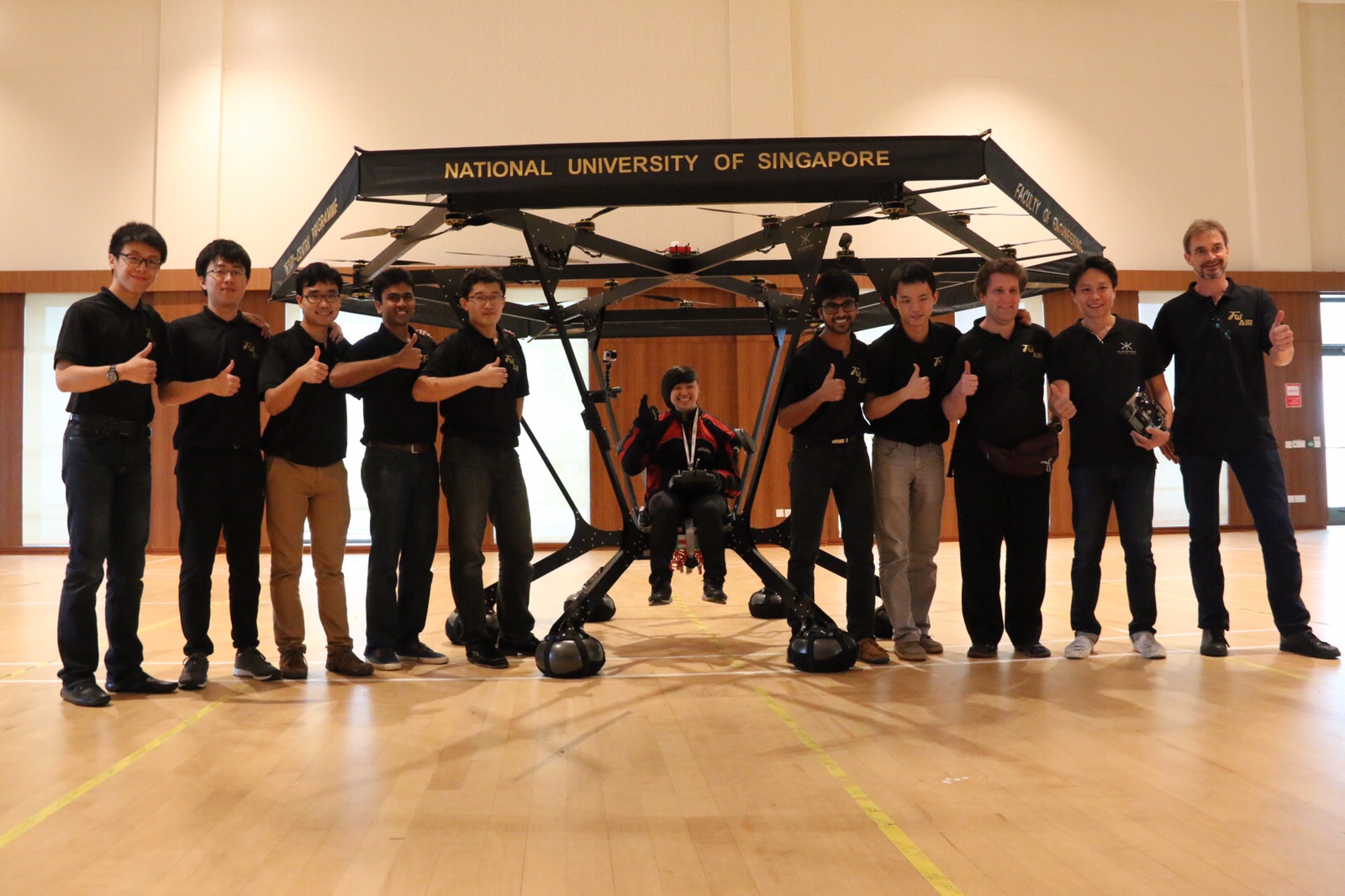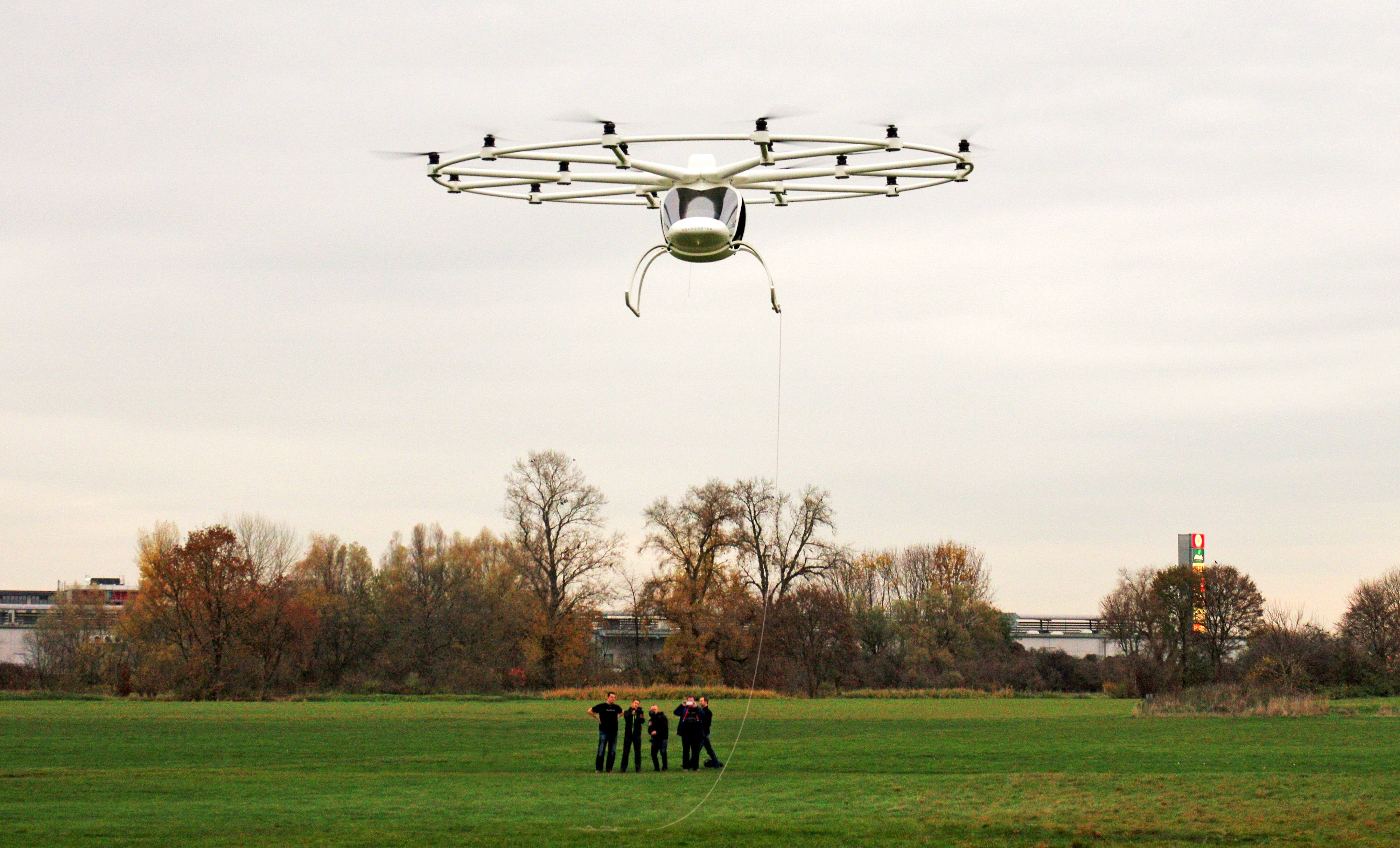Your editor has several friends who lay claim to the appellation, “ferroequinologist,” (student of the iron horse), meaning they fancy miniature trains and the layouts that support them. One friend helped construct a layout that takes up most of a good-sized building in Portland, Oregon – but even he would be dumbfounded by the massive installation in Hamburg, Germany – which includes an international airport in its midst that accounts for 180 takeoffs and landings per day and handles 1.2 million “passengers” per year. Blogmeister Klaus Burkhard oversees a wonderful web site based primarily on ultralight sailplanes. His writings have alerted your editor to the twin-motor self-launching ultralight Holliday Obrecht and his compatriots are building at EAA Chapter 309 in Charlotte, North Carolina; Snow White, an electrically-powered flying wing inspired by the Horton Brothers, and produced an expansive entry on the Volocopter that included detailed photographs and specifications. A recent entry on Hamburg’s Miniatur-Wunderland told of the remarkable airport that …
A Snowstorm in Singapore
Having worked on a three-week project in Singapore 10 years ago, your editor became accustomed to the daily temperatures approaching 100 degrees Fahrenheit, and evenings at a temperate 80 degrees (which some locals described as a “cold snap”). It makes one wonder where the name “Snowstorm” came from when students at the National University of Singapore worked two semesters to bring their mult-rotor recreational flying vehicle to fruition. An eight-person student team working as “FrogWorks” started with a 1/6th-scale model, then scaled that up to something that could carry and be controlled by a single pilot. FrogWorks is a collaborative effort between NUS Faculty of Engineering’s Design-Centric Program (DCP) and the University Scholars Program (USP). According to NUS, “FrogWorks engages students in the study, design and construction of clean leisure craft, a rapidly growing segment of green technology. Previous FrogWorks projects include the conversion of a sport motorcycle and a yacht from petrol to electric propulsion.” 24 (six more than …
The Proof is in the Piloting
Helicopter flying has been compared to patting your stomach while rubbing your head, something few manage well, if at all. Imagine trying to not only keep the rudder pedals, cyclic and collective under control but also fiddling with 18 throttles. Even a conventional helicopter is a handful with one engine or motor. Maintaining level flight with multiple lifting points at different points around the central fuselage would add to that level of difficulty beyond most people’s mental processing levels. Luckily, someone at Volocopter has worked out a very clever and quick-witted set of algorithms to take the stress out of that high-risk conundrum, as proven by company CEO Alex Zosel’s recent flight – single-handed and even briefly hands-off. Heike Blödorn, the firm’s public relations spokesperson, writes, “Alex Zosel is thrilled after his first flight and explained that ‘for years, we have claimed that the Volocopter is super easy to fly, now we’ve proven it in a very impressive way. I …
It’s Official, It’s a Volocopter Video
Thomas Senkel of the German firm e-volo sends this video, the official promotional video for these multi-rotor vertical takeoff and landing aircraft at AirVenture 2012. Better yet, the team will have at least their prototype machine on hand and many displays of future developments. Note the modular structure of these vehicles at the end of the video. Innovation Hangar Alpha will house the VC2 Volocopter, successor to the VC1 and improved in many ways, including three pilates balls for bouncing your landing on. The VC1 was the first “purely electrically powered, vertical take-off and landing (VTOL) aircraft and flew last October. At least the pilot is under the spinning rotors on this version. Seriously, the designs represent a clever and elegant design concept, which embodies ease of control and simplicity of operation. The software which enables smooth flight and nuanced control has to be a marvel of programming. The VC2 is not only a more sophisticated design, but lighter and …
e-volo Wins Lindbergh Innovation Award
e-volo, the company that crafted the VC-1 16-blade ultralight helicopter last year, won the Lindbergh Prize for that accomplishment and for its ongoing development of the multi-rotor platform, with single, two-seat, and unmanned aerial vehicles in conceptual versions. Yolanka Wulff, CEO of the Lindbergh Foundation, shared their press release on this award, given April 20 at AERO-Friedrichshafen. Erik Lindbergh presented the AERO 2012 Lindbergh Prize for Innovation to e-volo for the group’s “breakthroughs in redundancy, simplicity of controls and inefficiencies inherent in the control surfaces normally used in aircraft.” The Foundation noted, “This aircraft was so innovative that it appears to be in a category all by itself.” The award cited the safety of multiply redundant motors, controllers, and propellers, and explains that the next design phase, the VC evolution 2P, will “relocate the propulsion units above the fuselage which should improve the stability with a lower center of gravity and allow for the use of a whole airframe parachute …



